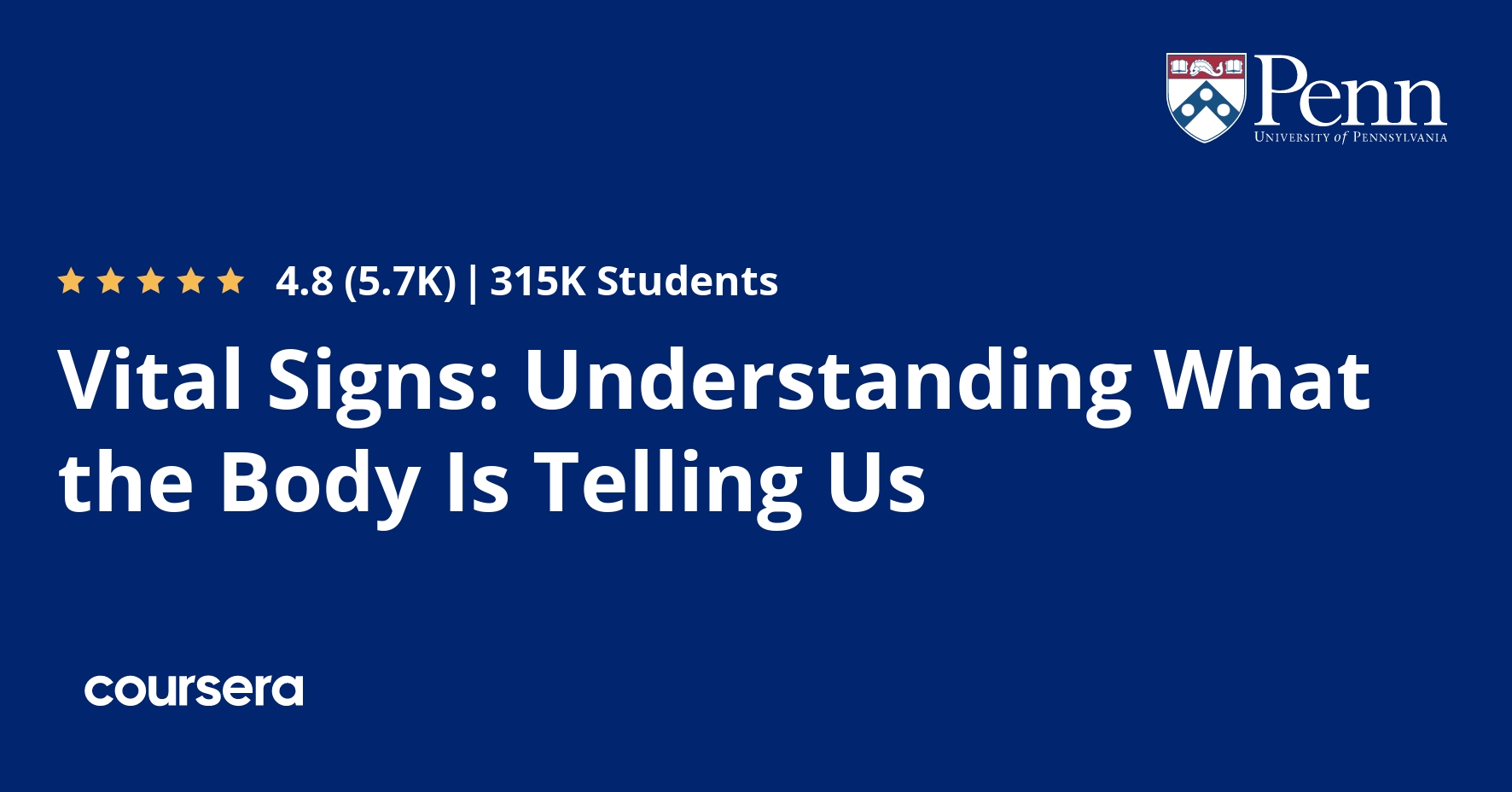Description
The vital signs – heart rate, blood pressure, body temperature, respiration rate, and pain – communicate important information about the physiological status of the human body. In this six-part course we explore the anatomy and physiology underlying the vital signs so that you will develop a systematic, integrated understanding of how the body functions. Relevant body systems are reviewed including cardiovascular and respiratory, followed by explanations of how the function of these systems affects vital signs. We discuss normal ranges, normal variants, and the mechanisms that underlie changes in the objective measurement of vital signs. The course also includes demonstrations of appropriate techniques for measuring vital signs in yourself and others.
The course is designed for a broad, general audience but will be particularly interesting for individuals working in healthcare, those considering a career as a healthcare professional, lay caregivers, those with an interest in personal health and fitness, or anyone who simply wants to understand how the body functions.
What you will learn
Week 1: Pulse/Heart Rate
This week we start our exploration of the vital signs with a look at the heart. We’ll study the basic structure of the heart, think about how the heart pumps blood through the body, and learn how clinicians assess and think about heart rate and the pulse.
Week 2: Blood Pressure
During week 2 we will learn about the anatomy of the blood vessels and how they function. You will have a better understanding of systolic and diastolic blood pressure, mean arterial pressure, and assessing blood pressure accurately.
Week 3: Metabolism
This week we will explore metabolism. We will discuss anabolism and catabolism, basal metabolic rate, how the body generates heat. You will also have a better understanding of how health care providers assess metabolic rate.
Week 4: Temperature
During week 4 you will learn the definition of mean body temperature and how the body regulates temperature. We will discuss hypothermia and the difference between hyperthermia and fever. Lastly, you will learn how to assess body temperature.







